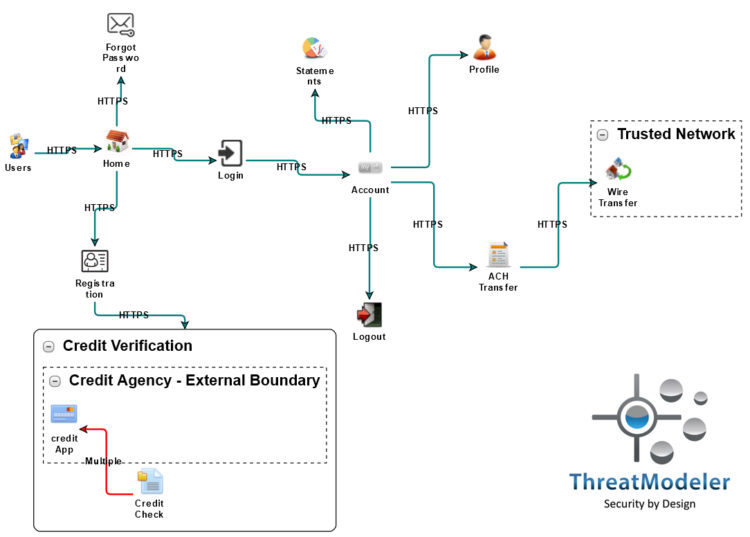

The result, unfortunately, is that in our experience few organizations actually perform threat modeling.


For each use case, define how application flows between system components.malicious external hacker, malicious internal hacker, activist, corporate espionage, etc. credit card data, authentication credentials, user contact information, etc. Define all types of data in the system including the Confidentiality, Integrity and Availability (CIA) requirements – e.g.Typically these organizations will perform the following steps: In many cases, organizations elect to use a formal Threat Risk Assessment process concentrated at the application level. In many cases, a comprehensive threat model can be incredibly time consuming and inefficient. Over the years we’ve had the opportunity to perform and observe threat modeling for several clients. Microsoft’s process is arguably the most popular and is supported by their SDL Threat Modeling Tool. As a result, some organizations have attempted to formalize the threat modeling process. When we try to bring threat modeling into team-based application development, relying on a single security expert’s in-memory model breaks down. The concrete activities for threat modeling differ by implementation: A seasoned penetration tester will create an informal threat model in her head before she attempts to break into a target. Prioritize building security countermeasures by risk.ĭ2iQ: The Leading Independent Kubernetes Platform.Understand which attacks and countermeasures are actually relevant to your system.Prevent vulnerabilities in design rather than later in the SDLC, thereby saving cost.Threat modeling provides several key benefits: Determine which countermeasures should the system contain to stop the vulnerabilities.Evaluate the risk of these potential vulnerabilities: the likelihood that they exist and can be successfully exploited and how can they help the attacker achieve the goals in step 1.Enumerate what potential vulnerabilities exist in the system.Evaluate what a potential attacker may be interested in.Generally, we can decompose threat modeling into a set of major steps: At a broad level, threat modeling is simply the process of looking at a system’s design from an attacker’s perspective. Microsoft’s Secure Development Lifecycle (SDL)Īll of these approaches suggest some variant of threat modeling as a design level activity.Building Security-In Maturity Model (BSIMM).The community has produced several methodologies to assist in embedding security into the SDLC, including (but not limited to):
#Advantages of microsoft free threat modeling software#
Many software developers understand the importance of finding bugs early in the Software Development Life Cycle (SDLC).


 0 kommentar(er)
0 kommentar(er)
